
The Commercial Factor: The X Factor and ITV
'the makeover show where what is made-over is the person'
The X Factor premiered on ITV at the beginning of September 2004 and has retained an Autumn slot leading up to Christmas each year to this very day. The programme was the brain child of Simon Cowell who had previously acted as a judge on ITV's Pop Idol. However, Pop Idol was owned by ITV and Cowell wanted to devise a format of his own with monies coming to his production company. The similarities between The X Factor and Pop Idol, which was cancelled after only two seasons, would lead to lawsuits. However, this article will place The X Factor as commercial television in the context of television generally, both in relation to other 'Reality TV' and other programmes, and will argue that while it does have distinctive features it also lacks 'uniqueness' in these other ways. These similarities, then, do not only occur on a generic level where one would expect to see them.
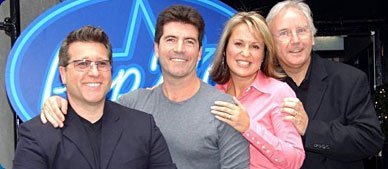
Pop Idol ran for two seasons in 2001-2 and 2003 and followed a pattern that is only too familiar to X Factor viewers. Auditions were held across the UK where selected hopefuls sang before four judges, Simon Cowell, Pete Waterman, Nikki Chapman, and Neil Fox; and many of the poor acts were aired for entertainment. The judges would then decide on 50 acts to go through to the next stage, prefiguring the early formula of The X Factor's 'boot camp'. However, the rest of the series was determined by viewer voting: the 50 acts were divided into five groups of ten where each contestant would sing a song. The judges would offer a very candid opinion but it was the top two from each group decided by the viewer vote that went forward to the theme-orientated live shows (though in the second season an additional two acts were given a second chance, one by the viewer vote and one by the judges). The live shows saw the contestant with the lowest number of votes eliminated in a Results Show aired later in the evening each week. The X Factor does display differences at the level of format with Graeme Turner noting that formats are original and copyrighted (contestants are split into categories based on their age and sex and whether they are solo artists or Groups with each category mentored by a particular judge, in the 'Judges Houses' round contestants are picked to go into the live shows, and the two acts with the least number of votes most weeks compete in a final performance with the judges deciding which act to send home). But the similarities are apparent and continuity with existing successful programme formats are likely to bring in viewers. Indeed, as Jonathan Bignell argues, Pop Idol is itself not 'unique' but is a version of the game show and 'the makeover show where what is made-over is the person'. He writes that here 'the objective of this transformation is explicitly public fame and recognition' with 'members of the public…advised' and 'abused by a team of experts who guide their transformation'. So The X Factor fits into this mould.

However, The X Factor fits in with a history of television programming more widely and is designed to get people to watch and consume advertisements. As a type of 'Reality TV', The X Factor is a talent contest and for this reason the Audition Shows which kick off each year's season are important in highlighting both talent and lack of talent. One sees selected members of the public auditioning for the judges; for the first five seasons these auditions took place in a judges' room, from the sixth season onwards the auditions were held in front of a live studio audience with a backing track; and from the tenth season there was a combination of both. Many television viewers will be entertained by the more dire acts and the looks that these elicit on the judges faces. These initial shows appeal to many viewers' voyeuristic tendencies, with the term 'voyeurism' here not associated with sex, but rather than resembling Channel 4's Big Brother where the television viewer looks in on the activities of contestants in a specially designed house, they mirror ITV's own You've Been Framed, based on America's Funniest Home Videos which itself owes much to Candid Camera with its gags. You've Been Framed began in 1990 and after being hosted by Jeremy Beadle, Lisa Riley, and Jonathan Wilkes respectively, it was taken over by comedian Harry Hill in 2004. Hill humorously narrates over clips that have been sent in by members of the audience depicting their family or friends in embarrassing situations. You've Been Framed is a very popular programme and its position in the Saturday night schedules has been earlier than The X Factor. One can conjecture that The X Factor auditions will appeal to this light-entertainment audience and keep many of them on ITV on a Saturday night.
Apart from in the first 2004 season where there were two editions of 'Boot Camp' screened on consecutive Saturdays, there were four instalments, which from the fourth 2007 season were screened on Saturdays and Sundays over two weekends, while in the 2014 season there were three editions screened over the Friday, Saturday, and Sunday of one weekend. According to some, the original 'Boot Camp' was filler, could drag on and was not very exciting; it involved contestants being set tasks of songs and being put forward or eliminated in rows at the end. In the 2013 and 2014 seasons, 'The Six Seat Challenge' was introduced to replace this formula. This was referred to in a 2013 promo as 'BRAND NEW BOOTCAMP'. The rules of 'The Six Seat Challenge' are that each of the acts, that survive an initial sing-off, perform in front of the judges and an audience at Wembley Arena; all the judges then offer their opinions on the acts; but the particular mentor decides whether he or she will offer that act one of six available seats in the contest, both literal seats and figurative ones, to go through to the 'Judges' Houses' round. However, the catch is that the mentor either offers or refuses a seat as he or she sees the acts and if the mentor wishes to offer a seat to another act but all six seats have been filled he or she must swap this person with an act already seated. This was referred to in the promo as a game of 'MUSICAL CHAIRS'. A judge is also entitled to ask for a sing-off between contestants in order to reach a decision or at the end to admit that he or she had made a mistake in the selection of their final six and reverse their opinion. One can imagine the stress that this places on the contestants already seated and when a new act comes up to sing and when the fact that there is going to be a swap is announced not only is the live audience abuzz but there are long-shots and cuts between close-ups of contestants displaying nervousness and emotion. The television form of the serial could be put to good effect; for example, editions could end on a cliff-hanger, as to which person's chair an act would be taking, designed to get the television viewer to return to the following episode. And techniques are borrowed from the live Results Show which we shall see in more detail later; the mentors reveal that the act they wish to swap the new contestant with IS, followed by a pause, designed to generate suspense; and a mentor may say this just prior to an advertisement break (though this is not common), encouraging the television viewer to remain with the channel to discover the resolution, with the next 'segment' beginning with a recap. But for now it is important to note that so-called 'Mr Nasty', Simon Cowell, is very much in favour of the 'dramatic' and 'controversial' nature of this new formula which fits in with the more voyeuristic and even cruel nature of 'Reality TV'.
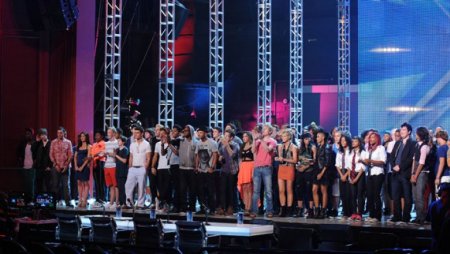
Following the boot camp instalments of The X Factor are the 'judges' houses' editions where contestants travel to the judges' (often very elegant) houses or what purports to be the judges' houses and compete again in the hope of winning a place in the live finals. It is at this stage that one sees the connections between the programme and the traditional game show, which much 'Reality TV' descends from. Just as the traditional game show is composed of 'rounds' in which competitors either lose and exit the programme or get closer to winning, engaging the television viewer, The X Factor has 'rounds' - auditions, boot camp, judges' houses - but ones which last for complete episodes rather than just for a tiny portion of an episode. These stretch the programme out absorbing the television viewer in a way that would be lost were there a move directly from boot camp to the live shows. Bignell writes about these as 'Gamedocs…adopted by the owners of more conventional game show formats'. Indeed, at the same time, as being a 'game', the judges' houses 'round' of The X Factor has strong connections with 'Reality TV' since emphasis is placed on the contestants' emotions at being selected or sent home. Like 'The Six Seat Challenge', this is, in many ways, a very cruel game.
These initial 'rounds' use a number of further techniques which are common to television, taking us beyond 'Reality TV' and the traditional game show. These techniques are designed to engage the viewer and get them watching. It is commonsense to assert that many viewers make their minds up very quickly as to whether they want to watch a programme and so pre-title sequences act as a 'hook'. After the first season, at the very start of the season's run, The X Factor pre-title sequence's disembodied voice emphasises the scale of the talent search to find, what would become referred to as, the 'NEXT BIG THING' and, with key images and words flashing up on screen, provides a sense of drama including in the presentation of the famous judges. In the first 'rounds' there are clips from within that week's instalment. In the case of the audition episodes, the clips will convey a sense of some of the more humorous dire performances along with the judges’ biting reactions and contestants’ responses, sometimes followed by a freeze frame for dramatic emphasis, while the boot camp and judges’ houses editions rely even more strongly on emphasising the contestants’ emotions that are going to be prominent in the actual 'episode'. Revealing what is to occur is a technique which can also be employed immediately prior to an advertisement break to keep viewers, just as we have seen a 'cliff-hanger' technique employed in 'The Six Seat Challenge'. Furthermore, the serial nature of the programme is highlighted in other ways to the end of episode 'cliff-hanger' we saw in 'The Six Seat Challenge'; where a later instalment is being offered there would be clips from the last episode, before launching into the new clips. Featuring clips from a previous episode or clips from a new episode just before the iconic title sequence is a long-standing technique in television; for example, the US has long-begun prime-time soap operas and drama series with a montage of more dramatic moments from the previous week or that will be contained in the new episode proper and these can also be seen in a series like I'm a Celebrity…Get Me Out of Here! as well as indeed extremely brief tasters in You’ve Been Framed. Furthermore, in The X Factor, like other long-running shows, the programme's past can be relied upon to keep viewers from the very opening episode. The 2010 season begins with shots of winners like Joe McElderry, Leona Lewis and Alexandra Burke, and successful runners up like Olly Murs and JLS, accompanying the phrase 'Year after year they come in their thousands, all with the same dream, but only a few stand out of the crowd. And now the dream has become reality…Tonight a new search begins'.
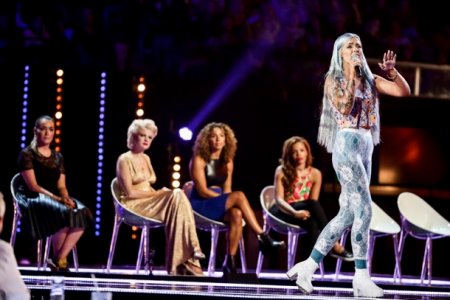
While the 2014 season saw the boot camp and judges' houses rounds transmitted on consecutive weekends on Friday, Saturday and Sunday, turning to the live shows and, very importantly, emphasis is placed on the idea that ITV is the place to be on a Saturday night. Either immediately prior to The X Factor's title sequence, or immediately after, Kate Thornton, Dermot O'Leary or the disembodied voice continually address the audience at home with the catch-phrase 'your Saturday night starts here' or a slight variation. The X Factor is therefore associated with Saturday-ness in the ITV television schedule, just as programmes like Doctor Who and Strictly Come Dancing have long been associated with Saturday-ness for the BBC. Associating a popular genre or programme with the start of the evening is not unique to The X Factor; successful long-running soaps Emmerdale and Coronation Street start various weekday evenings and in those cases act as, what John Ellis would call, 'bankers', creating 'echoes' where viewers may stay with the channel after top-rated programmes. This fits in with theorist Raymond Williams' notion of 'channel flow'. This is another example of the way The X Factor not only ties in with 'Reality TV' or the traditional game show.
We can deduce that every attempt is made to give The X Factor live shows the status of both 'Event TV' and 'must-see TV'. The term 'Event TV' has been used by scholars like Daniel Dayan and Elihu Katz, to refer to the televising of official ceremonies, such as royal weddings, funerals, and sports tournaments. The term 'must-see TV', meanwhile, has been employed by Mark Jancovich and James Lyons to refer to 'shows that…have become essential viewing' even by those viewers who are not absorbed in 'channel flow'. While The X Factor is not a one-off 'Event' it plays with the notion of 'Event TV', being a tournament which became grander in the fourth season with the addition of a fourth judge and an extra category where the younger boys and girls were split into two groups. Every ‘must-see’ tournament has someone to introduce proceedings and in The X Factor there are, as we have seen, two such figures: the disembodied voice which became more dramatic as the series progressed giving the impression of this as an important ‘must-see’ Event, and the flesh-and-blood host, first Kate Thornton and then from the fourth season onwards, Dermot O’Leary, whose role in the initial rounds was to act as commentator and interviewer. The voice, which announces the host, who emerges from a sliding panel, in the live shows, is not unique to The X Factor and can be seen in the more traditional game show: just as the voice states 'and here's your host: Dermot - O' - Leary', back in the ITV version of The Price is Right, the voice states 'and here he is: Leslie Crowther', in the SKY One version, the voice announces 'and here's your host: Bob Walman', in Family Fortunes the voice says 'and here's your host' followed, for example, by the name Bob Monkhouse or Max Bygraves or Les Dennis, and in Blind Date 'and here's your host: Ms Cilla Black'. These are just some famous examples. The hosts are often popular entertaining figures; shows, for instance, were titled Larry Grayson's Generation Game, Bruce Forsyth's Generation Game and Jim Davidson's Generation Game, and later Ant and Dec's Saturday Night Takeaway, and in the case of The X Factor Dermot O'Leary hypes things up and is indeed associated with 'Reality TV' presenting having been lured away from the Big Brother franchise.
However, the disembodied voice in The X Factor has an important function before even introducing the host. One way in which the live shows are coded as a 'must-see' tournament is through the sense that is given of the epic proportions of the contest and that this is the real test. In the boot camp and judges' houses stages, the voice often launches straight into announcing that night's episode but, as is sometimes the case with those rounds, in the first live show, the voice, or occasionally the host, begins the pre-title sequence with lines, often over shots of crowds, giving the few numbers of contestants left such as '50,000 applied to go before 3 judges in the nation's biggest talent search. Now only 9 remain', 'From 75,000 just 12 remain', 'They came in their thousands…last week THE FINAL 12 were revealed', and 'They came from across Britain…TONIGHT THE FINAL 16 SING LIVE FOR THE FIRST TIME'. The sense given is that each subsequent stage of the contest features the contestants to be taken most seriously with those in the live shows having survived all the previous gruelling stages such as the auditions, boot camp and judges' houses. These are seen in clips while the words 'AUDITIONS', 'BOOT CAMP' and 'JUDGES HOUSES' have flashed in bold capitals on the screen, and now the real 'battle' must 'commence'. This links with the sensationalist voice in other shows and with the more tame introductions to shows like Fame Academy.
It also seems reasonable to assert that The X Factor aims to generate all the excitement of a live concert making it 'Event TV' and 'must-see'. The camera pans across the live studio audience loudly cheering and holding placards with the name of the act they are supporting before the host is even dramatically introduced. The judges are announced by the disembodied voice and then by the host and in many cases walk onto the stage from behind a sliding panel on which are contained their images (still or moving). On some occasions, so too do the contestants. Modern aesthetics, associated with music magazines and performances, are used: lighting effects dominate the stage; the names of performers are revealed in lights; the names of performers are also revealed in poster-like fashion just before their act; the acts are also transmitted to the live audience on a number of screens positioned on stage; the acts are sometimes accompanied by bands or dancers and use props; and varying camera angles are used of the performances no doubt in an effort to maintain the television viewer's interest.
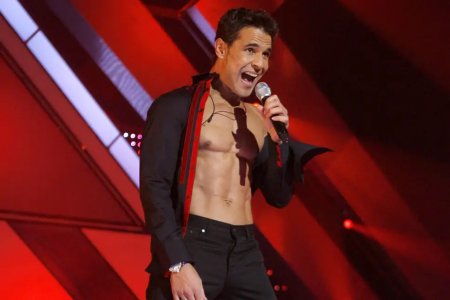
It is important to realise that as much as The X Factor is a programme about crowning a winner and rewarding them with a record deal each year, it is meant to entertain the viewers at home so that they tune in week after week in a 'must-see' fashion. It is reasonable to conjecture that not only are a variety of famous judges chosen but also that a variety of types of performer are selected so that the television viewer is not bored (for example, opera singer Rhydian) and that contestants not only go through to the live show based on their vocal abilities but also based on their entertainment value, a point which on-camera ruffles the feathers of music mogul Simon Cowell and provides comic friction between him and the other judges when there is interaction between judge and contestant and between the judges following each performance. Sharon Osbourne remarked in an early season after seeing an act 'We are trying to produce good television and that was good television'. So, seasons have seen Chico in Sharon Osbourne's category (who in a larger-than-life manner shouted the catchphrase each week 'What time is it? It's Chico-time!') and Wagner and John and Edward (commonly known as 'Jedward'), mentored by Louis Walsh. Wagner was indeed added to the line-up of finalists as part of a 'wild card' where we were told that each judge was allowed to add an act to the finalists at the very last moment. Humour was derived from Louis Walsh's continually mispronouncing the name of his own act, Wagner, while on the night contestants had to sing a song from the movies, Simon Cowell conceded that Jedward's rendition of 'Ghostbusters' had been entertaining and that Louis Walsh had chosen the right song for them ('that was sort of good'). In another instance, Cowell defended one of his acts as having provided 'en-ter-tain-ment'.
Also it is reasonable to assume that designed to contribute to The X Factor's status as 'must-see TV' is its coverage in the popular press and the way this coverage is referred to in dramatic fashion in the subsequent episode of the programme. Moments of high drama occur in The X Factor, whether staged or not. The fourth season actually began with the comment that The X Factor had been the most talked about programme of the year with Louis Walsh having supposedly quit with flashes of newspaper headlines to that effect, but the drama also occurs in the live shows. This indeed includes Judges quitting the show; in the second season, for instance, Louis Walsh had already declared he was quitting after friction with Simon Cowell which Walsh says on-air 'wasn't a publicity stunt'; in the fourth season, Sharon Osbourne stated that she was quitting after finding two of her acts in the bottom two; and in the eighth season Kelly Rowland 'quit' after friction with Tulisa Contostavlos. Moreover, in the sixth season, there was a scandal in the press about 'Jedward' being given preferential treatment, in the seventh season there was a scandal involving Gamu not being chosen as a finalist, and in the eighth season one of the members of the boy band Risk left. Techniques are used such as the dramatic disembodied voice stating 'and then it all went wrong' and 'LAST WEEK IT WAS ALL CHANGE ON THE X FACTOR'; recaps of Sharon Osbourne being despondent; and, very significantly, further shots of newspapers like The Sun appearing in quick succession, coming forward towards the television viewer and with the camera moving from left to right across the page to take in the headline ('Sharon Exits', 'Sharon Quits'/'KELLY: I'M OFF Furious Star jets back to US after row with Tulisa'/'GAMU FIX FACTOR', 'GAMOVER', 'GET GAMU BACK IN'/'Risk Rocked As Ash Quits', 'I don't want to be in a boy band'). Sometimes there are even extremely brief visual and aural moments of news presenters to accompany these images.

Another contribution to The X Factor live shows 'must-see' status is the way in which, just as we saw with the earlier stages of the contest, it fits in with the serial form of television. Typically, as in the first rounds of the contest which began, for instance with 'PREVIOUSLY', each episode, following the first live show, would begin with the words 'LAST WEEK' or 'LAST WEEKEND' appearing on-screen and spoken by the disembodied voice. Commonly, there would be a rapid flashing display of a number of the previous weeks' acts, and of a few of the judges' previous critical comments as the voice-over continued, and we would be made to recall the act that was voted off. Emphasis would be placed on contestants' emotions, often accompanied by rising operatic music. Although different visual techniques were employed in these pre-title sequences such as there again being freeze frames on the judges or contestants faces after a previous week's comment, with the screen going to black and white, for dramatic effect, the effect of cardboard cut-outs of the contestants and judges in the 2011 season, the background of flames over the judges pictures and with those coming towards the screen also in the 2011 season, and the scenes shown within a frame on the television screen in the 2013 season, the emphasis on the serial form was the same. After this, again, the voice would commonly say 'TONIGHT' as the word appeared on the television screen, and would give the sense of the continuation of the events. The voice would announce the acts remaining and sometimes the week's theme and, as in the initial rounds, come to say 'IT'S TIME - TO FACE - THE MUSIC', interspersed with judges' comments, before there was a launch into the title sequence.
In these ways The X Factor is rooted in the tradition of successful 'Reality TV' like Big Brother and I'm a Celebrity. Not only are these programmes an extension of the traditional game show in serial form, but the Eviction Night of Big Brother, for example, likewise saw an energetic studio audience holding placards with the name of the housemate they were supporting, and sometimes the presenter referred to the programme's having been in the news emphasising the whole show as 'must-see'.
"Another factor undoubtedly contributing to viewers' voting will be sexual desire."

As a programme which blends the television forms of series and serial, The X Factor Results Show, carrying on a tradition from Big Brother, Fame Academy, and Strictly Come Dancing, is important in revealing which acts would be returning the following week and move closer to being crowned The X Factor winner and which act or, in the case of a double elimination, acts would be eliminated. Theorist Roland Barthes referred to 'the hermeneutic code' as the setting and solution of puzzles and just as this code is evident in fictional drama it is also present in The X Factor where the enigma is which acts would survive.
The programme is designed to get as many television viewers as possible to contribute to this result by voting. This is one significant way in which money is made for ITV, for Simon Cowell's company SyCo, and for phone companies. Indeed, not only are viewers encouraged to vote by phone but they have been invited by the host to enter phone-in competitions to win extravagant prizes. However, at the end of each main show, and at the start of the Results Show, the host would remind the television viewer of a brief clip of each of the acts accompanied by the number to call to vote, telling them that if they want to keep their favourite in the contest they must vote and that they are 'the boss'. Indeed, from the 2009 season the Results Show moved from later on the Saturday evening to the Sunday giving people more time to vote and was a longer show with famous singers performing, announced by the disembodied voice. In 2012 viewers were shocked when Dermot O'Leary announced lines were open for voting before the acts had even performed. At 35p, votes made by landline are significantly cheaper than those made by mobile phone which can be staggering and add up considerably if a person votes numerous times in the space of an evening. Voting by text is also cheaper but, for example, in 2011 viewers were not permitted to vote in The X Factor final in this way, though they could vote using their red button. However, as of the 2014 season of The X Factor viewers are for the first time able to vote free of charge by downloading an app on their smartphones. The interactive nature of this contest, though, links The X Factor with Big Brother, I'm A Celebrity and the BBC's Fame Academy and Strictly Come Dancing.
For some television viewers, the excitement of the live studio audience, with their T-shirts and placards, will be infectious causing them to vote. The acts are also, on one level, treated as hopefuls; they narrate what winning will mean for them with this no doubt getting some viewers to vote. Another factor undoubtedly contributing to viewers' voting will be sexual desire. The acts are treated as 'made-over' and the 'sexy' celebrities many aspire to meet, for instance, seen signing autographs. Even without conducting an audience survey, it is reasonable to suggest that the show will attract many of those (teenage girls and gays) who like looking at pin-ups of young male pop-stars in teenage music magazines, the very magazines that would feature pin-ups of these acts. This is what Cheryl Cole (now Cheryl Fernandez-Versini) meant when she said that Lloyd Daniels would appeal to girls and that One Direction were her 'guilty pleasure'.

We now turn to the atmosphere of the Results Show. Tension is built up for the television viewer, as well as for the contestants, during the 'Results' Show. Kate Thornton, for example, states in one show that the result is 'painfully close between the bottom three', eliciting a gasp from the studio audience to be mirrored by many of us, and in another show remarks that it is 'time to bring back the people nervously awaiting the results'. Dermot O'Leary similarly notes on one occasion that after the high drama of the evening things are 'very tense indeed' and that the contestants were 'feeling the nerves tonight', and in another instance refers to the 'nervous acts'. Thornton and O'Leary are therefore highlighting the overall atmosphere of apprehension in the studio which would be shared by many viewers at home. Both Thornton and O'Leary would read out the Results pausing after stating that 'the next act to return next week is -'. The camera would move in on the different contestants with the soundtrack providing a sense of intensity and resembling a heartbeat, before the host revealed the name of the safe act to displays of elated emotion by the parties.
As noted, ITV has its eyes on building a devoted audience who will return week after week and also wants to keep viewers engaged with the channel so that they will not flick over to watch something else but will watch the advertisements. This returns us to the notion of 'channel flow' as opposed to 'viewer flow' where audiences construct their own viewing pattern facilitated by the remote control. A pause has the potential effect of losing viewers. A common strategy employed by presenter Kate Thornton in the early years of The X Factor was as follows. After revealing most of the acts that would be returning the following week as a result of the public vote, she would tell us that out of the three remaining acts only one more would definitely be back and that the other two would have to compete head-to-head in a showdown for the Judges' Vote which would also involve the generating of suspense. At this point, she would say 'The final act to be returning this week IS', and, as with the previous announcements there would then be a pause, at which point the tension would be built up with shots of the remaining contestants accompanied by the heartbeat sound. However, unlike in the previous cases, the suspense would not be diluted through the revelation of the final act to have made it through but rather Kate Thornton would teasingly say 'we'll find out after the break', keeping many members of the home audience hooked. This strategy, however, was for the most part dropped by the time Dermot O'Leary took over as host, but has on occasions resurfaced when O'Leary is to announce the final act definitely safe, and is also one we have also seen became used in 'The Six Seat Challenge'.
An intertextual approach reveals how this technique tied in with ITV's goals as a commercial broadcaster more generally. This technique can be seen, for example, in a more traditional game show where the stakes are high, Who Wants to be a Millionaire. Here the hermeneutic code was evident where presenter Chris Tarrant would commonly leave audiences on an enigma, whether a contestant had provided a correct answer and was about to win a huge sum of money or whether they had answered incorrectly and gambled a large proportion of their winnings away, to be resolved after the advertisement break. Audiences were therefore encouraged to remain with the commercials to see the resolution of this enigma at the beginning of the next segment. More recently, the game show The Chase also employs this strategy at a key moment when the contestant has answered a question which may have won him or her a significant amount of money.
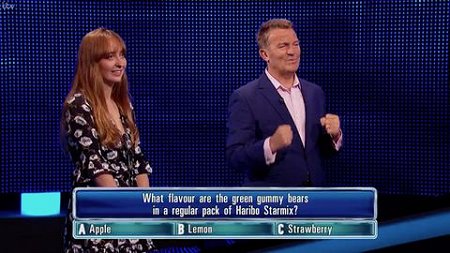
This is the game show's equivalent to the dramatic moments which punctuate fictional dramas at advert breaks, and is akin to the cliff-hangers at the end of episodes of such programmes. These dramatic moments at commercial breaks can be seen in all fictional dramas: mysteries like Agatha Christie's Poirot with each new 'segment' implicitly promising to add to the resolution of the puzzle, with some ending on Poirot finally realising how stupid he has been not to see the solution, and also in soap operas which rely on high moments of emotion and drama. The aim in all cases is to get the viewer to remain with the channel, through the commercials, for the continuation of the programme ('channel flow') and shows how The X Factor is far from unique. Therefore, an intertextual approach goes beyond looking at comparisons between The X Factor and other 'Reality TV' contests and traditional game shows.
All these weekly instalments lead to a semi-final and final which fit in with the notion of 'Event TV' we have seen (contestants are eloquently dressed, they perform alongside famous artistes, who may be their mentors, and clips show the support for them from their home town) as well as 'must-see TV' where viewers consume advertisements and may vote. The viewer vote alone decides the winner whose name is revealed at the end of the show after a long suspenseful pause. Again, in the pre-title sequence of the final, and sometimes the semi-final, the dramatic disembodied voice lures television viewers in, emphasising the scale of the contest and that out of the many thousands who applied only a few remain standing. The voice tells us that week by week contestants 'fell' or came 'crashing down' and some pre-credit sequences begin with the number of contestants as it totalled at the start appearing on screen and falling to the low number that are still in the contest. The final is rooted in the tradition of sports tournaments, the traditional game show, 'Reality TV', and drama series. For example, in the 2004 final, the voice in the pre-title sequence stated that one contestant would leave with a £1 million record deal and that the other would get nothing, which echoes a voice's assertion at the beginning of the BBC's game show The Weakest Link and presenter Anne Robinson's statement at the beginning and ends of episodes where an entire 'game' takes place within one edition. Also, the very notion of a final can be seen in 'Reality TV' like Big Brother. However, the idea of a 'final' can additionally be seen in drama serials as well as in series with 'story-arcs' which combine a different narrative each week with an on-going narrative which reaches a climax in the final episode of a season. The final episode, as it were, offers the loyal viewer a pay-off, encouraging the television viewer, as with these other programmes, to keep watching. 'Reality TV' both follows in this tradition and, as Matt Hills, notes influences the narrative strategies of other dramas.

We have so far seen that it is important to ITV that television viewers watch the commercial breaks but the sponsorship of the programme is also key. Telephones are significant since viewers can use them to vote as well as using mobile phones to send text messages to friends, putting posts on Facebook walls and now Tweeting using the hash tag #factor, which appears on-screen, as they watch events unfold. The X Factor has indeed been described as the most Tweeted about programme. The sponsor of The X Factor for the first three seasons was a mobile phone manufacturer, Nokia, and has recently been TalkTalk/TalkTalk TV which provides mobile, television and broadband services, so the nature of the programme links with the sponsor just as was the case with some other shows like Blind Date, sponsored by Going Places, 'The Holiday Matchmaker'. Complaints were made when it was clear that Simon Cowell and Louis Walsh were using Nokia phones to send text messages to one another about the acts in an early show. For sponsoring a programme on ITV simply means that a short credit sequence is placed around a programme with a brand's logo, meaning that through this a particular brand becomes affiliated with that programme.
The Xtra Factor is transmitted on ITV2 immediately after Saturday and Sunday night's editions of the main programme and its role is to continue to generate interest in this commercial property and increase viewer participation. The idea of having The Xtra Factor is not 'unique' as its launch was prompted by the success of the multitude of Big Brother spin-offs, most notably E4 companion show Big Brother's Little Brother. Moreover, The Xtra Factor cannibalises content from 'Reality TV' programming such as this and its spin-offs. Like Big Brother spin-offs, The Xtra Factor includes additional footage; here, for instance, of audition material. Somewhat akin to Big Brother's Big Mouth, in The Xtra Factor viewers participate, here via phone calls and video messages to the judges, and celebrity guests offer their opinions on events. And resembling Big Brother Live itself, The Xtra Factor has been known to include clips from within 'The X Factor House', when there was one, although these are often comedy pieces and the rules are not such that this footage is what the contestants are judged on. Also, like Big Brother, which included interviews with evicted contestants but in a special edition on the main channel, The Xtra Factor sees the losing act of the week, as well as the winner of the overall competition at the end, in conversation with the presenter.

The success of The X Factor can be detected by its huge ratings figures as well as the television awards it has won, and, although recent figures show it behind Strictly Come Dancing, it has easily beaten the world's longest running science fiction programme, the BBC's Doctor Who, in viewing figures by a few million when the two have occupied the same time-slot. Furthermore, the importance of this 'type' of programme can be seen through the way Simon Cowell very quickly devised Britain's Got Talent which followed a similar format of auditions followed by live shows. Again, at the start, Cowell acted as one of the Judges, although this time the acts were not limited to singers. Additionally, Jon de Mol and Roel van Welsen created the Dutch programme The Voice in Holland to rival The X Factor and in 2012 the BBC launched its own version of the programme. The Voice similarly begins with auditions and knock-out rounds but with its own set of rules which distinguishes it from the copyrighted format of The X Factor. Other types of game competitions have followed such as BBC's The Great British Bake Off (2010-). Finally, it is important to note that such has been the success of The X Factor that there have been overseas versions. An Australian version of The X Factor, with tweaks to the format, aired in 2005 and returned on a annual basis from 2010, and a US version was launched in 2011 and lasted for three seasons. This version saw Simon Cowell participate as one of the Judges, as well as a brief appearance by Cheryl Cole judging the very first auditions. In February 2014 the US version was axed following Cowell's decision to return to the UK show. Such overseas versions are not uncommon; a pilot for Britain's Got Talent was made in the UK in 2005 but it was only after the success of America's Got Talent (2006-) that it came to ITV as a regular series (2007-). The Apprentice also launched in the US before it was picked up in the UK (2005-), beginning with auditions and leading up to a final like The X Factor. What we can conclude from this overall discussion is that The X Factor, which has now been running for over a decade, is a useful product for the commercial broadcaster ITV. The typical viewer will not stop to consider the points made in this article while watching but all the elements combined will act on them.
Article
Andrew O'Day (2014). Reference Sources: S/Z by Roland Barthes, Big Brother: Reality TV in the Twenty-First Century by Jonathan Bignell, Media Events: The Live Broadcasting of History by Daniel Dayan and Elihu Katz, 'Scheduling: the last creative act in television?' by John Ellis, Triumph of a Time Lord: Regenerating Doctor Who in the Twenty-First Century by Matt Hills, Quality Popular Television by Mark Jancovich and James Lyons, 'Genre, Format and "Live" Television' by Graeme Turner in The Television Genre Book edited by Glen Creeber, Television, Technology and Cultural Form by Raymond Williams.
Andrew O'Day is the co-author of Terry Nation (Television) - a study of the work of one of Britain's foremost television science fiction writers, creator of The Daleks as well as two television serials; Survivors and Blake's 7.
